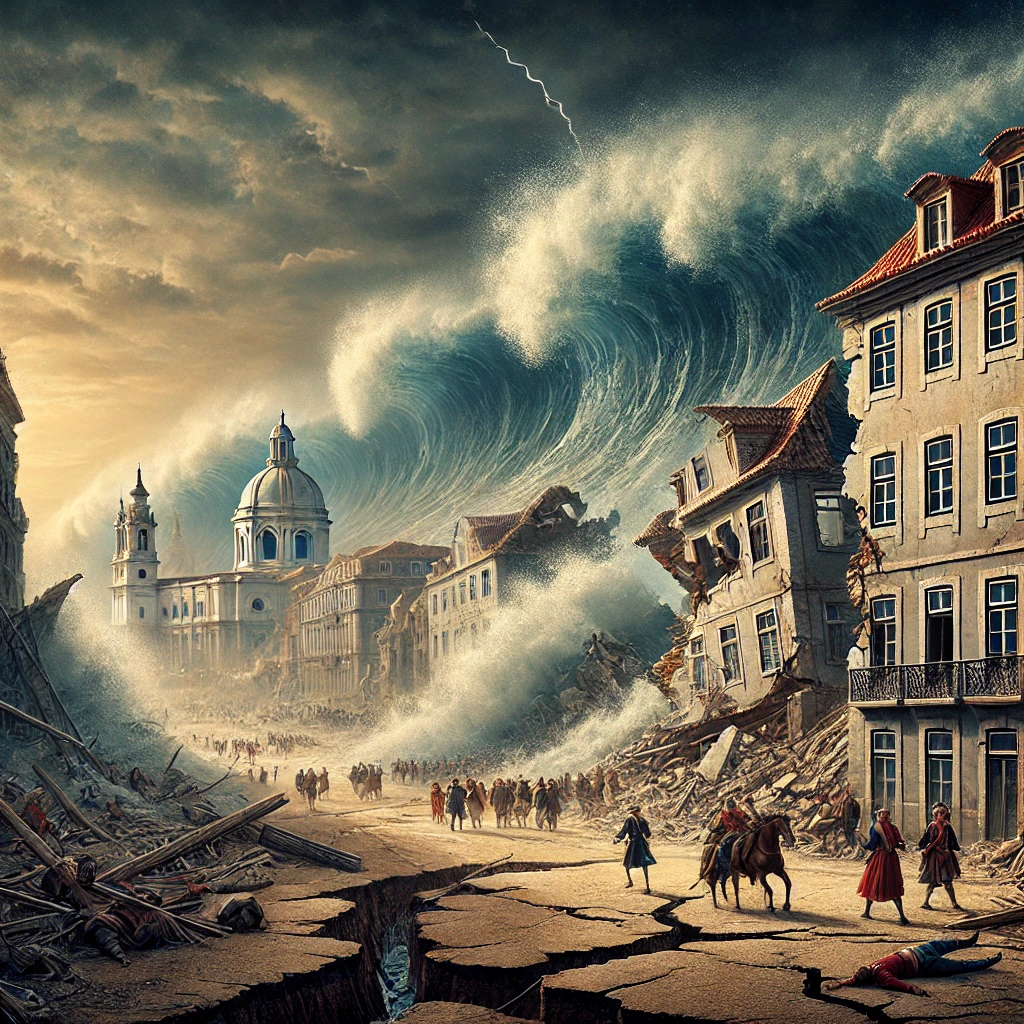The 1755 Lisbon earthquake and subsequent tsunami remain one of the most powerful and transformative natural disasters in European history. This catastrophic event, which struck Portugal on November 1, 1755, not only devastated Lisbon but also altered the course of European philosophy, architecture, and disaster preparedness. Its lasting impacts provide insight into how societies can rebuild and adapt in the face of tragedy.
The Earthquake and Tsunami: A Deadly Combination
The earthquake, estimated at a magnitude of 8.5 to 9.0, struck Lisbon on All Saints’ Day, a major Catholic holiday. The tremor caused buildings to collapse, ignited fires, and led to widespread panic. Shortly after the quake, a massive tsunami surged into Lisbon’s harbor, engulfing the city and sweeping thousands into the sea. The tsunami then continued, impacting coastal areas across the Atlantic and Mediterranean.
Human and Economic Toll
The disaster claimed between 30,000 to 50,000 lives in Lisbon alone, with additional fatalities in nearby regions affected by the tsunami. The destruction extended to valuable buildings, libraries, and churches, and Lisbon’s economic infrastructure was severely damaged. This tragedy also struck a psychological blow to Europe, causing people to question religious explanations for natural disasters and inspiring a reevaluation of philosophical and scientific beliefs.
Philosophical and Cultural Shifts
The Great Lisbon Earthquake profoundly impacted European thought. Enlightenment philosophers like Voltaire and Immanuel Kant pondered the causes and meaning of the disaster, challenging traditional views of divine punishment. Voltaire’s poem Poème sur le désastre de Lisbonne questioned the prevailing belief in an all-benevolent deity, and the earthquake spurred debates on the nature of human suffering. This intellectual response contributed to the spread of Enlightenment ideas and the secularization of European society.
Advances in Urban Planning and Seismology
The aftermath of the Lisbon earthquake led to advancements in urban planning and architectural practices. The Marquis of Pombal, Portugal’s prime minister, led the reconstruction efforts, implementing new building codes that made structures more resistant to earthquakes. Lisbon’s reconstruction included wide streets and seismic-resistant designs, setting a precedent in earthquake engineering and urban planning.
Lessons and Legacy
The Lisbon disaster underscored the importance of preparedness, urban planning, and scientific inquiry. It inspired modern seismology and tsunami studies, and Lisbon’s rebuilding process influenced future approaches to disaster response and urban resilience. The event stands as a historical reminder of the need to understand and mitigate natural hazards.
Conclusion
The Great Lisbon Earthquake and tsunami of 1755 reshaped not only Lisbon but also European thought and architecture. Its legacy endures in the fields of philosophy, urban planning, and disaster preparedness, reminding us of the profound effects a natural disaster can have on society.

